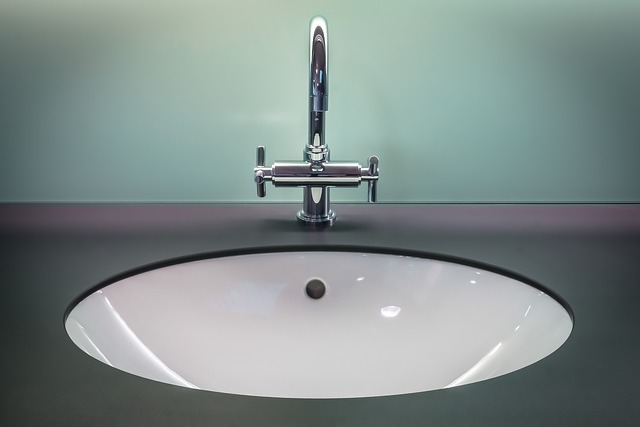Materials and finishes that withstand moisture in water-based bathroom fittings
Choosing the right materials and finishes for water-based bathroom fittings affects hygiene, longevity, and overall usability. Proper selection reduces corrosion, supports easier maintenance, improves accessibility and comfort, and can contribute to water conservation. This article explains which materials and surface treatments perform well in wet conditions and why they matter for retrofit, installation, and long-term sustainability.

Selecting materials and finishes that hold up to constant moisture is central to reliable bathroom design. Water exposure, cleaning chemicals, and temperature changes accelerate wear on fixtures such as WCs and bidets, so material choice influences hygiene, sanitation, plumbing performance, and ongoing maintenance. This article outlines durable options, surface treatments, and design considerations to support retrofit or new installations while balancing water conservation, accessibility, and comfort.
How do materials affect hygiene and sanitation?
Ceramic and vitreous china remain common for WCs and bidets because their non-porous glazes resist staining and are easy to disinfect, supporting hygiene and sanitation. Stainless steel is used in high-traffic or clinical settings for its antimicrobial properties and wipe-clean surfaces, though it can show water spots. Solid-surface materials and some engineered composites offer seamless joins that reduce crevices where bacteria and grime collect. When specifying fixtures, consider smooth finishes and tight tolerances that facilitate regular cleaning and disinfectant compatibility without causing surface degradation.
What plumbing-compatible materials resist corrosion?
Plumbing compatibility and corrosion resistance are crucial where water contacts metals and connectors. AISI 304 or 316 stainless steels offer good resistance to chlorides and mild cleaning agents; 316 is preferred in harsher chemical or coastal environments. Brass and bronze alloys, often used in valves and fittings, perform well with proper plating (nickel or chrome) that prevents dezincification. High-quality plastics such as ABS, PVC, and PEX are widely chosen for drain and supply lines for their resistance to corrosion, light weight, and ease of installation. Matching materials and protective finishes helps avoid galvanic corrosion in mixed-metal assemblies.
Which finishes help with retrofit and installation?
For retrofits, finishes that tolerate onsite cutting, sealing, and adjustment are valuable. Porcelain enamel and durable powder coatings applied to metal fixtures can withstand handling and cleaning, while acrylic and solid-surface finishes allow sanding and repair if surfaces get scratched during installation. Look for finishes with strong adhesion to substrate materials and tested resistance to household cleaners. For accessibility retrofits, textured, slip-resistant finishes on grab bars and seat surfaces improve comfort and safety, while consistent finish selection simplifies maintenance and replacement parts sourcing.
How do choices impact maintenance and longevity?
Durability reduces long-term maintenance costs and downtime. Enamelled ceramics and glazed sanitaryware maintain appearance over many years with minimal care; however, chips can expose substrates and require repair. Corrosion-resistant metals and properly sealed composites limit mineral buildup and surface breakdown. Consider serviceability: fixtures designed for easy access to seals and fasteners streamline routine plumbing work. Regular maintenance schedules tailored to material needs—descaling for hard-water areas, inspection of sealants and gaskets, and timely replacement of sacrificial parts—extend service life and sustain hygiene and efficiency.
How do designs support accessibility, comfort, and ergonomics?
Material selection intersects with ergonomics and accessibility: softer seat materials, contoured rim finishes, and warm-to-touch surfaces enhance comfort for users with mobility concerns. Matte or low-gloss finishes reduce slip risk and glare for visually impaired users. Anti-microbial coatings on high-touch components like flush levers, seat hinges, and control panels can support sanitation, though these must be evaluated for long-term efficacy and compatibility with cleaning regimes. Consider height-adjustable or wall-mounted fixtures that combine ergonomic benefits with easier floor cleaning and better plumbing access during installation and maintenance.
Can materials improve water conservation, sustainability, and efficiency?
Material choices influence water conservation and sustainability through manufacturing energy, recyclability, and compatibility with efficient fixtures. Porcelain and vitreous china are durable and recyclable in some programs, while certain plastics and composite materials may be recyclable depending on local services. Technologies such as dual-flush mechanisms, pressure-assist systems, and sensor-operated valves can be integrated into corrosion-resistant housings to maintain reliable plumbing performance and conserve water. Selecting long-lasting materials reduces replacement frequency, lowering embodied carbon and supporting sustainable procurement.
In choosing materials and finishes for WCs, bidets, and related fixtures, balance immediate performance with lifecycle considerations. Prioritize non-porous, corrosion-resistant substrates and finishes that withstand cleaning agents, support hygienic maintenance, and pair well with plumbing components. Factor in retrofit needs, accessibility requirements, and water-conservation goals to select solutions that offer comfort, efficiency, and durability over years of service.






